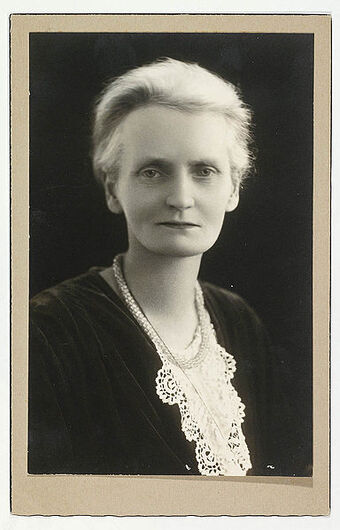Partner Mabel Singleton
Queer Places:
St Bartholomew, High street Maresfield, North Uckfield, Maresfield, East Sussex TN22 2EJ, UK
 Mary
Eliza Fullerton (1868-1946), writer, was born on 14 May 1868 at Glenmaggie,
Victoria, second surviving child of Robert Fullerton, born in Belfast of
Presbyterian Scot extraction, and his wife Eliza, née Leathers, from Suffolk,
England. Her father 'didn't know a plough from a handsaw' before he took up a
selection in the Gippsland bush and built the bark hut where Mary was born.
Mary was educated at home by her mother and at the local state school. She
read avidly as a child: by the age of 11 she had read Paradise lost
three times; she knew long passages of Shelley and Byron by heart and was
steeped in the Bible. She also began to compose verse of her own.
Mary
Eliza Fullerton (1868-1946), writer, was born on 14 May 1868 at Glenmaggie,
Victoria, second surviving child of Robert Fullerton, born in Belfast of
Presbyterian Scot extraction, and his wife Eliza, née Leathers, from Suffolk,
England. Her father 'didn't know a plough from a handsaw' before he took up a
selection in the Gippsland bush and built the bark hut where Mary was born.
Mary was educated at home by her mother and at the local state school. She
read avidly as a child: by the age of 11 she had read Paradise lost
three times; she knew long passages of Shelley and Byron by heart and was
steeped in the Bible. She also began to compose verse of her own.
After leaving school Mary helped on the farm but continued her reading. In
her early twenties she moved to Melbourne. By 1899 she was living with her
parents and sisters at Prahran; about 1907 they moved to Hawthorn. Overcoming
a natural shyness, she became vocal in the women's suffrage movement of the
late 1890s and early 1900s. She gained election to the Prahran School Board of
Advice in 1899-1902, addressed women's progressive league meetings and joined
the Women's Organizing Committee of the Political Labor Council of Victoria.
During World War I she contributed articles on feminist issues and the case
against conscription for publications such as Ross's Monthly and the
Victorian Socialist.
At the same time she wrote stories, articles and verse for magazines and
periodicals, sometimes under the pseudonym 'Alpenstock'. She was a member of
the local literary and debating society and won several prizes for her work.
In 1908 she published Moods and melodies, a collection of thirty-seven
sonnets and nine lyrics. In 1921 she published more verse, The breaking
furrow, and a collection of delightful reminiscences of childhood entitled
Bark house days (reprinted in 1931 and 1962).
Mary had visited England in 1912; in 1922 she returned there, sharing a
house with a friend and patron, Mrs Mabel
Singleton. She met
Miles Franklin; their rapport is evident in their voluminous
correspondence between 1927 and 1946. Though weakened by asthma and heart
trouble in later life, Mary wrote three novels under her own name—Two women
(1923), The people of the timber belt (1925) and A Juno of the bush
(1930)—and two under male pseudonyms, as well as a descriptive piece, The
Australian bush (1928). Sensitive about her lack of university education
and convinced that her sex prejudiced recognition of her work, she insisted
that her authorship remain anonymous as 'E' when Miles Franklin arranged for
her verse to be published as Moles do so little with their privacy
(1942) and The wonder and the apple (1946). Her identity was revealed
only after her death.
Mary Fullerton never married: 'My nature really intended me to be the “go
alone” that I've been', she wrote in her unpublished memoirs. Miles Franklin
described her as 'sensitive, fastidious, reticent, self-mastered'. She died on
23 February 1946 at Maresfield, Sussex, and was buried in the local cemetery.
While her novels have little lasting merit, some of her poems, and certainly
her Bark house days, deserve a place in Australian literature.
My published books:


BACK TO HOME PAGE

Sally O'Neill, 'Fullerton, Mary Eliza (1868–1946)', Australian Dictionary
of Biography, National Centre of Biography, Australian National University,
http://adb.anu.edu.au/biography/fullerton-mary-eliza-6258/text10779, published
first in hardcopy 1981, accessed online 4 January 2020.
 Mary
Eliza Fullerton (1868-1946), writer, was born on 14 May 1868 at Glenmaggie,
Victoria, second surviving child of Robert Fullerton, born in Belfast of
Presbyterian Scot extraction, and his wife Eliza, née Leathers, from Suffolk,
England. Her father 'didn't know a plough from a handsaw' before he took up a
selection in the Gippsland bush and built the bark hut where Mary was born.
Mary was educated at home by her mother and at the local state school. She
read avidly as a child: by the age of 11 she had read Paradise lost
three times; she knew long passages of Shelley and Byron by heart and was
steeped in the Bible. She also began to compose verse of her own.
Mary
Eliza Fullerton (1868-1946), writer, was born on 14 May 1868 at Glenmaggie,
Victoria, second surviving child of Robert Fullerton, born in Belfast of
Presbyterian Scot extraction, and his wife Eliza, née Leathers, from Suffolk,
England. Her father 'didn't know a plough from a handsaw' before he took up a
selection in the Gippsland bush and built the bark hut where Mary was born.
Mary was educated at home by her mother and at the local state school. She
read avidly as a child: by the age of 11 she had read Paradise lost
three times; she knew long passages of Shelley and Byron by heart and was
steeped in the Bible. She also began to compose verse of her own.
